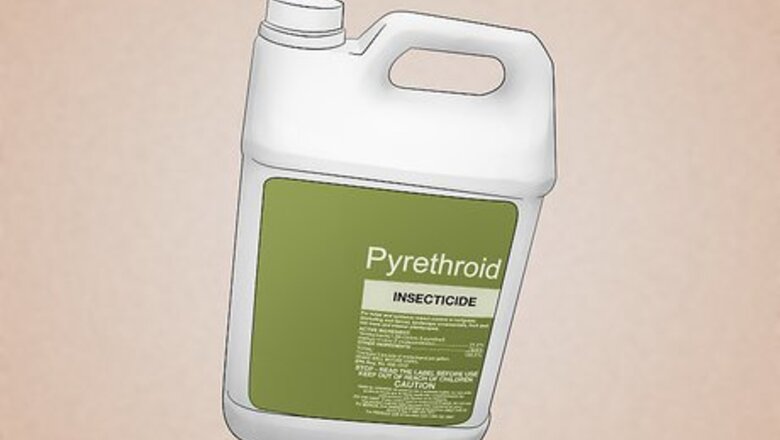
views
X
Research source
However, crane fly larva, known as leatherjackets, can cause damage to your lawn. You can kill the flies immediately with an insecticide or you can take preventative measures by killing their larva. Attracting natural predators like birds to your yard will help you get rid of these pests.
Using an Insecticide

Pick a pyrethroid or an imidacloprid product. Both pyrethroid and imidacloprid insecticides work in a similar way by causing paralysis in insects, eventually leading to their death. The products are sold in liquid and granule forms at many gardening stores or are available to purchase online. Use care when handling insecticides. Even though the toxicity level is not as high for humans as it is for insects, it can still cause irritation or sickness.
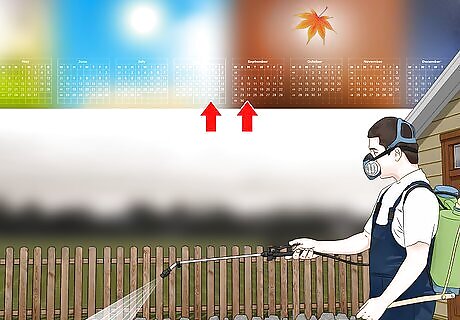
Apply the insecticide in late summer or early fall. Crane fly eggs hatch at this time and the insecticide will be the most effective for killing adults and leatherjackets alike. Pyrethroids and imidacloprid are preventative to help control future grub problems. You can apply insecticides again when temperatures rise in the spring.

Use a garden sprayer or spreader on the lawn to disperse the insecticide. If you’re using a liquid form of the insecticide, dilute the solution with water depending on the area that you are covering, or about 10 mL of concentrate per 5 L of water. Use a spreader to disperse granules across your lawn. Protect yourself from inhaling chemicals by wearing an earloop mask or similar product.
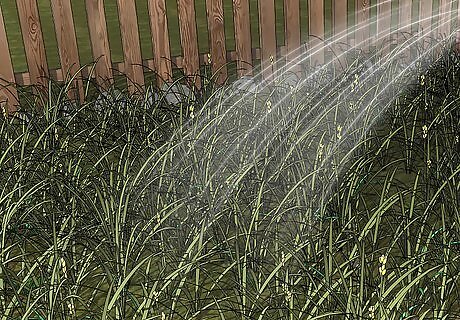
Cover the lawn with ⁄2 inch (1.3 cm) of water immediately after application. Once you have finished applying the insecticide, water your yard with a sprinkler or a hose. This ensures that the pesticides are brought down into the soil and helps prevent accidental exposure to pets or other members of the family. Measure how fast your sprinkler waters a lawn by using a rain gauge. ⁄2 inch (1.3 cm) of water can take anywhere from 15 to 30 minutes.

Let the insecticide set for 30 minutes. Avoid letting pets outside for the next half hour while the lawn dries. While the lawn is wet, animals and humans are at risk for exposure to the insecticides. Once the lawn is dry, it is safe for family members and pets to return outside without exposure to the insecticide.
Killing the Larva

Purchase a nematode solution. Certain species of nematodes are natural predators for grubs, especially leatherjackets. Nematodes are available in sprays and mixes for solutions, and they can be purchased online or through big box lawn care stores. Nematode solutions can range anywhere from $20 to $40 through various retailers.

Apply the nematodes in the fall. The larva can stay in your lawn through the winter and emerge in the spring to lay again. By applying the nematodes in the fall, you are preparing for the spring season. The air temperature should be above 55 °F (13 °C) when you apply the nematodes for them to take effect.
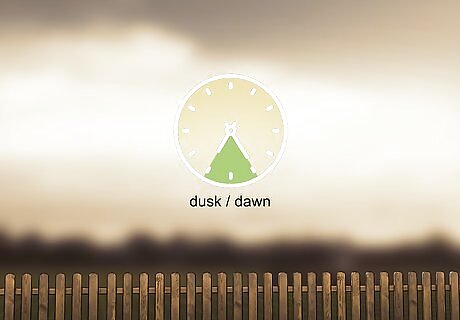
Spray at dawn or dusk. Nematodes are damaged by ultraviolet light from the sun. By applying in the early morning or late evening, you can ensure the best outcome from the nematodes. Spraying on an overcast day would also be effective.
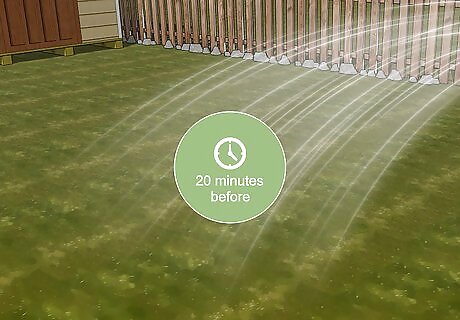
Water the lawn for 20 minutes before application. Nematodes travel better when the ground is wet. Ensure the ground is moist before you apply the solution by using a hose or watering can. If the ground is still wet from a recent rain, you do not have to water before application.

Use a garden sprayer to spread the nematode solution. Start from one end of the lawn and work your way towards the other using long strokes. Avoid boxing yourself in and walking over areas you’ve already sprayed. Give extra attention to areas of your lawn that may appear damaged by grubs.
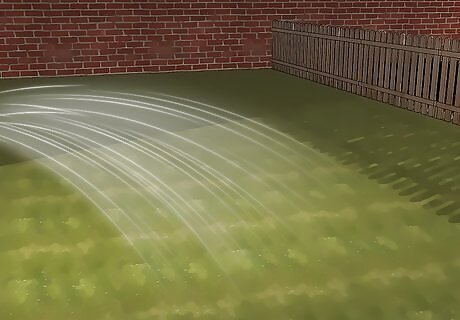
Wet your lawn with ⁄4 inch (0.64 cm) of water after application. If it is warm and dry, water your lawn within 30 minutes of spraying the nematode solution. In wet climates, ensure the lawn is watered within 2 hours of application. Once the nematodes are absorbed into the soil, they will begin working and kill the crane fly larva.
Attracting Birds to Your Yard
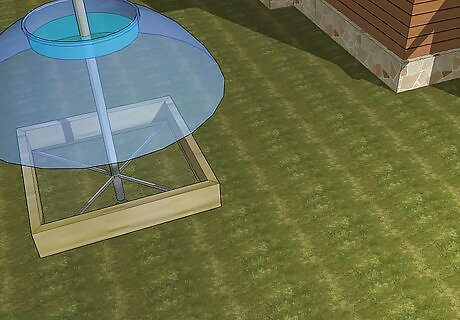
Set bird feeders up in your yard. While the goal is for the birds to eat the flies and the grubs, they have a very diverse diet. By including bird feeders in your yard, you will attract a variety of species. Black-oil sunflower seed is the most common feed and attracts jays, finches, and sparrows. Keep the feeders filled with seed or else the birds will leave to find other food sources.

Offer birdhouses and other nesting shelters. Have a variety of birdhouse sizes at different heights to cater to the various types of birds in your yard. Clean the birdhouses once a year so they do not harbor mites or old nests. Make sure that the shelters are 20 feet away from feeders so nesting birds are not disturbed by others.

Leave common nesting materials in your yard. Objects like twigs and dead leaves may make your lawn look messier, but they are used often by birds and other local species. Rather than raking these materials, leaving them in your yard helps birds build their nests and encourages them to stay in the area. Dead pieces of wood and leaves attract grubs and bugs and can also serve as a feeding ground for the birds.
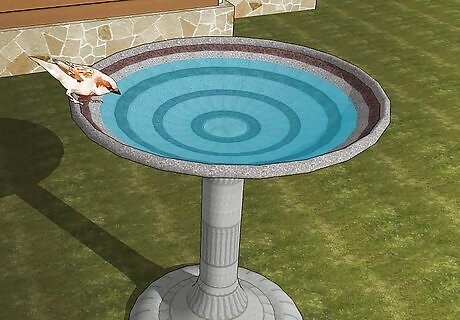
Provide clean water in a bird bath. A bird bath not only gives birds a station to clean themselves, but it also gives them fresh drinking water. Maintain clean water for birds by purchasing a bath with a pump so the water is not stagnant, or replace the water every two days. Do not fill the bird bath more than 2 inches (5.1 cm) deep with water, or else the excess water will make it difficult for the bird to fly. Changing the water often will help prevent mosquitoes and other insects from laying their eggs.










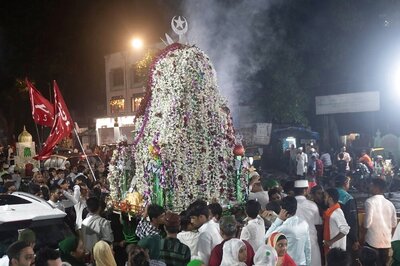





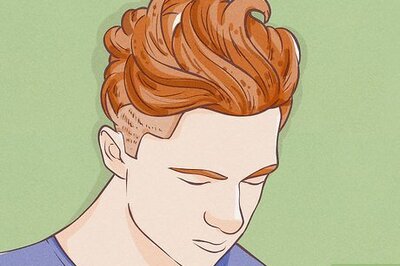
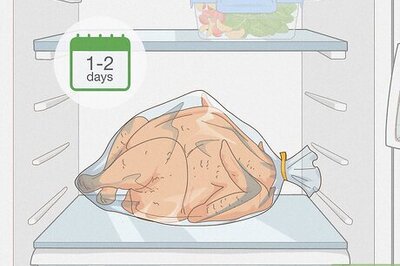
Comments
0 comment